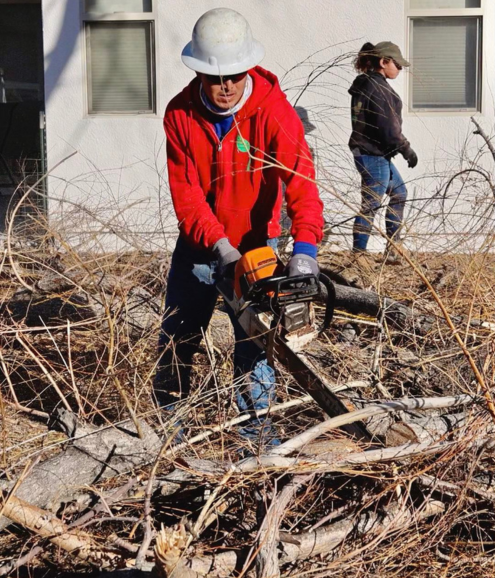Nestled in the scenic beauty of Arizona, Prescott is a haven for nature enthusiasts and homeowners looking to transform their outdoor spaces into stunning landscapes. With its unique blend of mountainous terrain, rich flora, and a climate that encourages creativity, Prescott offers endless possibilities for breathtaking landscaping projects. Whether you’re dreaming of a serene garden retreat, a vibrant desert oasis, or a functional yet beautiful outdoor living space, Prescott’s diverse environment provides the perfect canvas. Join us as we explore the magic of Prescott landscaping, where expert techniques meet the natural allure of the Southwest to create truly enchanting outdoor spaces. From practical tips to inspirational ideas, we’ll guide you through the journey of making your dream landscape a reality. Embrace the natural charm of Prescott and unlock the potential of your surroundings with the art of landscaping.
The Unique Climate and Geography of Prescott
Prescott, Arizona, is a city blessed with a unique blend of climate and geography that makes it a special place for landscaping enthusiasts. Nestled in the central highlands of Arizona, Prescott enjoys a temperate four-season climate, unlike many other parts of the state known for their extreme heat. This favorable environment, combined with the region’s diverse terrain, offers a rich palette for creating stunning and sustainable landscapes. Let’s delve into the elements that make Prescott’s climate and geography so conducive to beautiful and functional garden designs.

Prescott’s Mild Four-Season Climate
Prescott experiences a pleasant four-season climate, with mild summers and cool winters. The summer temperatures typically range from the mid-70s to the mid-80s (°F), providing an ideal environment for a wide variety of plants. Winters are cool but not harsh, with average temperatures in the 40s and occasional snowfall, making it possible to enjoy a garden year-round.
Diverse Elevations and Terrain
The city is situated at an elevation of about 5,300 feet, which contributes to its moderate climate. This elevation also brings a mix of terrains, from rolling hills to rocky outcrops, providing unique opportunities for creative landscaping. Homeowners can take advantage of natural slopes to create terraces, rock gardens, and water features that blend seamlessly with the natural environment.
Rich Soil Varieties
Prescott’s soil varies widely across different areas, from sandy and well-drained to clay-rich and fertile. Understanding the specific soil type in your garden is crucial for selecting the right plants and ensuring their success. Amending the soil with organic matter can improve its structure and nutrient content, making it more hospitable for a diverse range of plants.
Abundant Sunshine
With over 275 sunny days per year, Prescott offers ample sunlight for photosynthesis, promoting healthy plant growth. The abundant sunshine also allows for a broad spectrum of flowering plants and vegetables to thrive. Gardeners can maximize the benefits of sunlight by strategically positioning plants according to their light requirements.
Seasonal Precipitation Patterns
Prescott receives about 19 inches of rainfall annually, with a distinct monsoon season in the summer and sporadic winter rains. This seasonal precipitation supports a wide variety of plant life and reduces the need for excessive irrigation. Implementing rainwater harvesting systems can further capitalize on this natural water supply, making landscapes more sustainable.
Water-Wise Landscaping Techniques
Prescott’s unique climate, characterized by its semi-arid conditions and seasonal rainfall, necessitates smart water management in landscaping. Water-wise, or xeriscape, landscaping is a sustainable approach that conserves water while maintaining a beautiful garden. This method is not only environmentally responsible but also cost-effective and low maintenance. Let’s explore eight water-wise landscaping techniques that can transform your Prescott garden into a thriving, sustainable oasis.
Planning and Design
Effective water-wise landscaping begins with careful planning and design. Start by assessing your garden’s natural features, such as sun exposure, soil type, and existing vegetation. Create a plan that groups plants with similar water needs together. This zonal approach ensures that irrigation is efficient and tailored to the specific requirements of different areas in your garden. By designing with water conservation in mind, you can reduce water waste and promote healthy plant growth.
Soil Improvement
Improving your soil is crucial for water-wise landscaping. Well-prepared soil retains moisture better and provides essential nutrients to plants. Incorporate organic matter, such as compost or well-rotted manure, into your soil to enhance its structure and fertility. This not only improves water retention but also encourages deep root growth, making plants more drought-resistant. Regularly amending your soil will maintain its health and water-holding capacity.
Mulching
Mulching is one of the simplest and most effective water conservation techniques. Apply a layer of organic mulch, such as wood chips, bark, or straw, around your plants. Mulch helps to retain soil moisture, reduce evaporation, suppress weeds, and regulate soil temperature. Additionally, as organic mulch decomposes, it enriches the soil with nutrients. Aim for a mulch layer that is about 2-4 inches thick to maximize its benefits.
Efficient Irrigation Systems
Installing an efficient irrigation system is key to water-wise landscaping. Drip irrigation and soaker hoses are excellent options as they deliver water directly to the plant roots, minimizing evaporation and runoff. These systems can be set on timers to ensure consistent watering schedules. Additionally, consider using rain sensors and soil moisture sensors to further optimize water usage. Regularly check and maintain your irrigation system to prevent leaks and ensure it operates efficiently.
Drought-Tolerant Plants
Selecting drought-tolerant plants is essential for a water-wise garden. Native plants are often the best choice, as they are adapted to the local climate and soil conditions. In Prescott, species such as lavender, yucca, agave, and various succulents thrive with minimal water. Incorporating these plants into your landscape not only conserves water but also reduces maintenance needs. Look for plants with deep root systems and low water requirements to ensure long-term sustainability.
Hardscaping Ideas to Complement Your Garden
Hardscaping is an integral part of landscape design that involves the use of non-plant elements to enhance the aesthetic and functional aspects of your garden. In Prescott, incorporating hardscaping can help manage water runoff, reduce maintenance, and create beautiful outdoor living spaces. Here are some key hardscaping ideas to complement your garden:
- Patios and Deck: Create a comfortable outdoor living area with patios and decks. Use materials like stone, brick, or wood to build a space where you can relax, entertain, and enjoy the beauty of your garden.
- Pathways and Walkways: Install pathways and walkways to connect different parts of your garden. Choose natural materials like gravel, flagstone, or pavers to blend seamlessly with the landscape while providing practical routes for foot traffic.
- Retaining Walls: Use retaining walls to manage slopes and prevent soil erosion. These structures can also serve as planting beds, adding height and visual interest to your garden. Materials like stone, brick, and concrete are durable and attractive options.
- Water Features: Add a tranquil touch with water features such as fountains, ponds, or waterfalls. These elements create soothing sounds and attract wildlife, enhancing the overall ambiance of your garden.
Conclusion
Prescott offers a unique and enchanting environment that Yavapai Landscaping expertly enhances through innovative and sustainable landscaping solutions. Whether you’re looking to create a serene backyard oasis or a stunning front yard that impresses all who pass by, our team of skilled professionals is dedicated to bringing your vision to life with creativity and precision. Embrace the magic of Prescott’s natural beauty with a landscape that reflects the charm and character of this special region.
For more information or to schedule a consultation, please contact us at Yavapai Landscaping. We are conveniently located in Prescott, Arizona, and can be reached at 928-910-4147. Our experts are eager to assist you in transforming your outdoor spaces into beautiful, functional landscapes. Let us help you discover the true potential of your property and create a landscape you’ll love for years to come.












